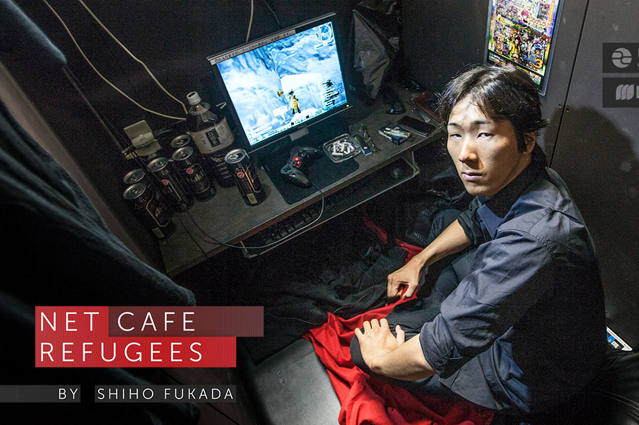From depression rates to sobering figures for heart attacks, strokes and suicides, the statistics surrounding Japan’s strained workforce may indeed be alarming. But the stories behind those numbers are downright harrowing.
A new documentary is focusing on the faces of those contending with Japan’s most troubling economic trends. “Japan’s Disposable Workers,” a collaboration between Japanese photographer Shiho Fukada’s two organizations, The Pulitzer Center on Crisis Reporting and MediaStorm, is a trilogy of sorts. Its first segment is dubbed “Overworked to Suicide.” A synopsis on the documentary’s website describes this chapter of the film as depicting the period “After the recession of the 1990s, (when) Japan’s white collar salarymen increasingly must work arduous hours for fear of losing their jobs. This often leads to depression and suicide.”
The documentary not only covers these workplace issues, but also the greater community problems that stem from Japan’s economic turmoil. Another segment, titled “Net Cafe Refugees,” zeroes in on the part-time workers who have resorted to living in public access centers due to their low wages. This chapter was the most moving for Brian Storm, founder of MediaStorm and Executive Producer of the project, who says: “The thing that really got me was the visceral sense of living inside of basically a closet [sic] at the net cafe. It really made me feel claustrophobic. The indignity of it, and then the isolation. I tried to capture that by showing the time sped up and the time slowed down. You’re always in this same location and it’s almost like this dream state of having to always be in that one little room without escape. I really wanted to capture that in a way that felt emotional and in a way that felt like you were experiencing it as well.”
Homelessness is also a key theme in the final segment, “Dumping Ground.” It tracks the decline of Kamagasaki, a formerly thriving day laborers’ town near Osaka that hosts 25,000 unemployed elderly men.
Together, these three chapters reveal an intimate glimpse into Japan’s suffering workforce. The message is made palpable by Fukada’s photos, which she had taken for an earlier portrait series. When she, MediaStorm, and The Pulitzer Center first broached the idea of turning the portrait series into a documentary, the two organizations were quite eager to begin the project. However, challenges abounded, mainly because no one at Pulitzer or MediaStorm could speak Japanese, leaving their teams struggling to determine how they would match the hours of audio interviews that Fukada had conducted with the photographer’s visuals, in order to create an immersive film experience. MediaStorm’s website says that Fukada labored intensively over this problem. Storm says those efforts payed dividends, resulting in a documentary that finds “the human element of the story, that thing that other people can relate to. This series is obviously a story about the absolute extreme edge of the work ethic associated with Japanese workers and the horrific ramifications of it. But you also see them as people. It’s not a number, it’s not a statistic.”
—Kyle Mullin
Image: Mediastorm.com








